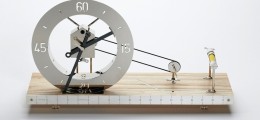After spending countless hours analyzing visual management boards in office and manufacturing environments, many fail to live up to the expectations we set for them and die a slow and painful death. Here are three simple mistakes I routinely see made when designing and implementing visual boards:
1. The boards are overcomplicated and fail to simply and effectively show normal versus abnormal
2. There is very little challenge build into the boards…they are way too “green”
3. The boards are boring…they look the same and lack any emotional connection or creativity
The following is an example of an executive assistant’s board which illustrates these key points:
This type of visual board can be seen in many office environments where the staff has been challenged to “implement visuals in their area” and become lean. In this particular case, the board focuses on scheduling, emails, travel packets and document management. With each category displayed, the goal is 100% (or very close to it) completion of the activity, with a weekly audit established to check on the progress. On the surface, the board is well organized, displayed openly and updated regularly. Upon closer look, however, the visual has a few problems which keep it from being effective as a tool for driving daily continuous improvement.
First, if all the goals are 100% and the assistant can easily achieve them, there is no challenge for her and thus “no problem” identified on the visual for her to solve. Second, this board only displays status on predetermined activities and fails to integrate steps taken to achieve an improved state. It lacks both a challenging vision of the future and clear aggressive targets which stretch the assistant and create “problems” she can then solve through daily improvement activities. It is only by creating this gap between what is possible and what currently is that she can be put into a position of growth and challenged to innovate.
As easy as this may sound, there are a number of issues that arise as soon as you want to make these changes to her board. First, the assistant needs to be open to the idea of wanting to take a risk and progressing toward a challenging goal. She needs to be ok with posting a board that says she is not perfect, but is working on it. Second, she needs to set aside time for addressing the problems that arise and coming up with new ideas to improve. Third, she will most likely need help in both the identification of issues as well as the creativity needed to solve them. If she is like many of us, she may be too close to her own process to be able to innovate. Her role may be better suited to identifying and finding the root cause of the problems, not creatively finding an solution. This puts the burden on the manager to not only follow up and ensure her progress and use of the visual, but assume the role of a mentor and help her develop into a daily problem solver, who is motivated by taking risks and challenging herself to redefine what it means to be an executive assistant and creating value for the organization.





Leave a Reply